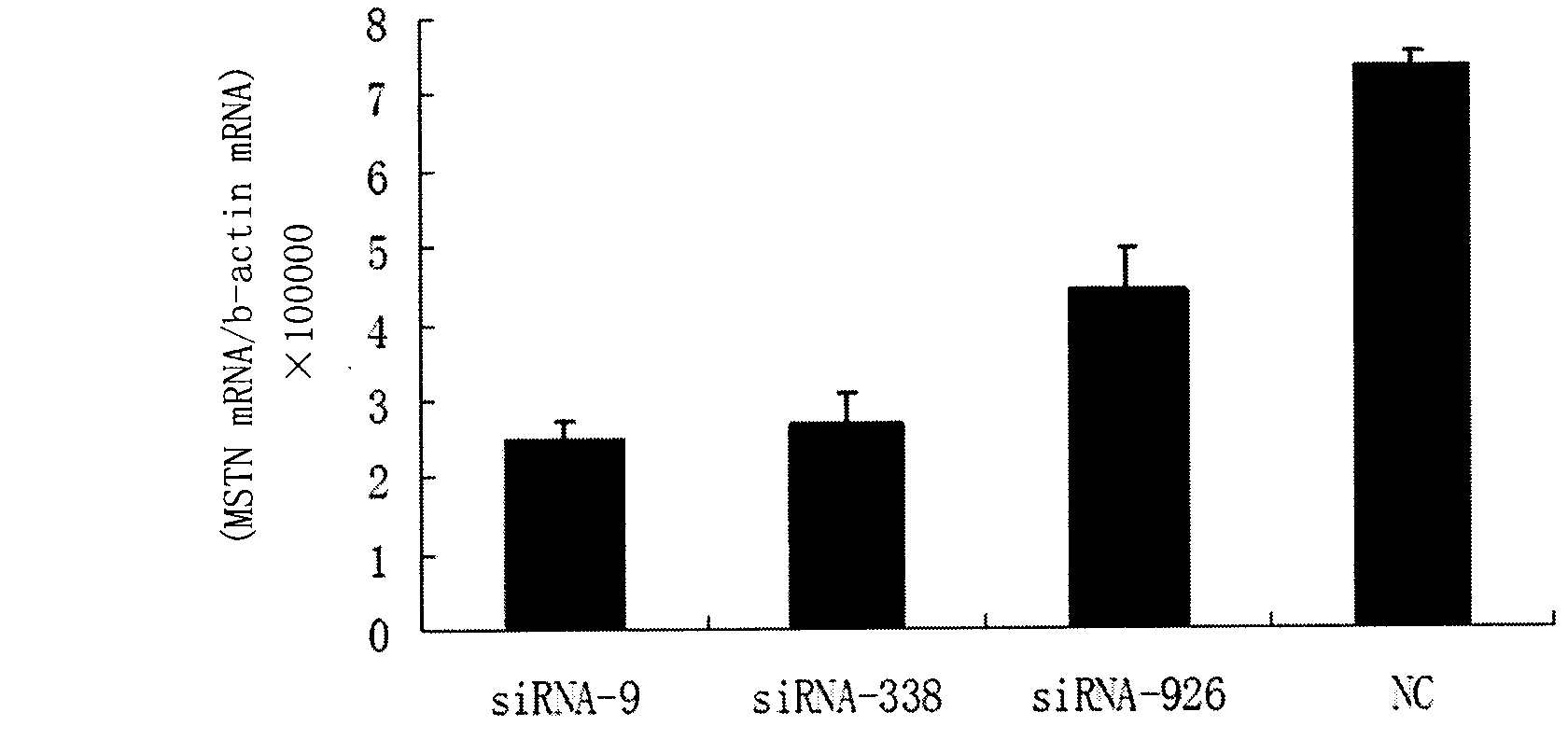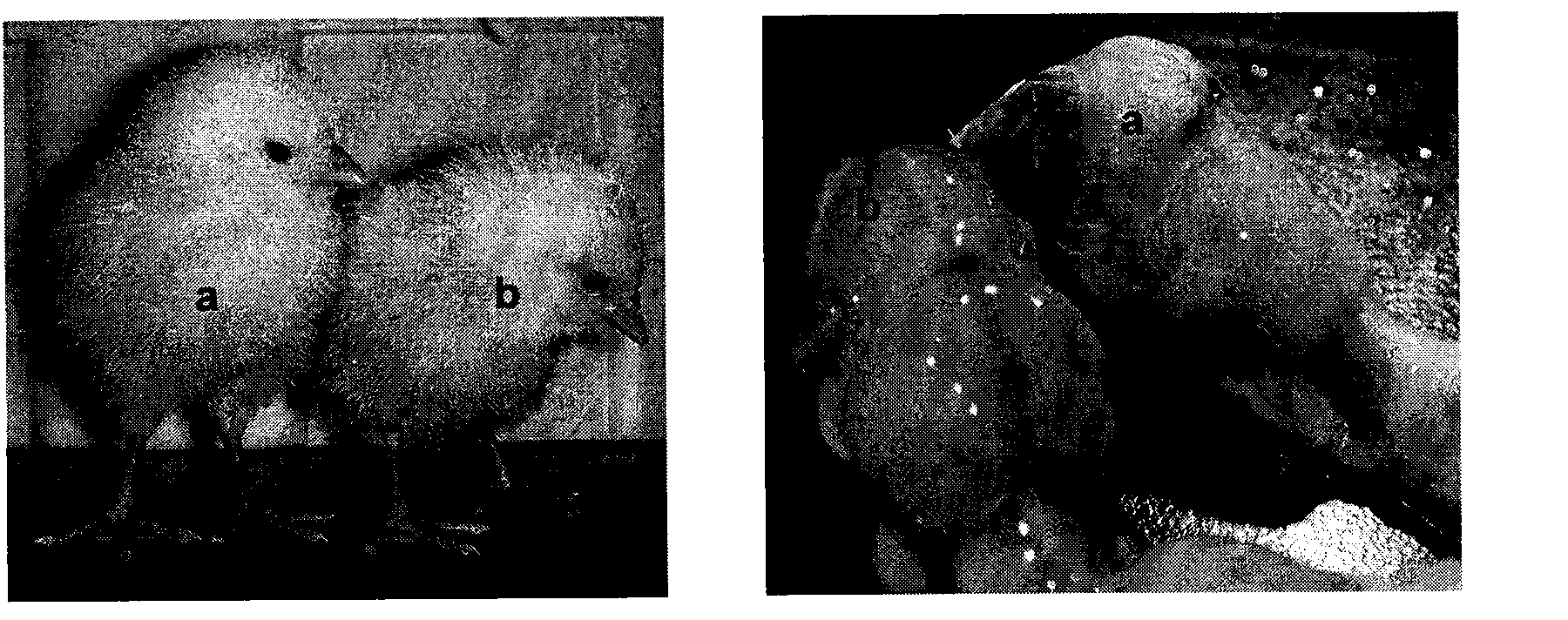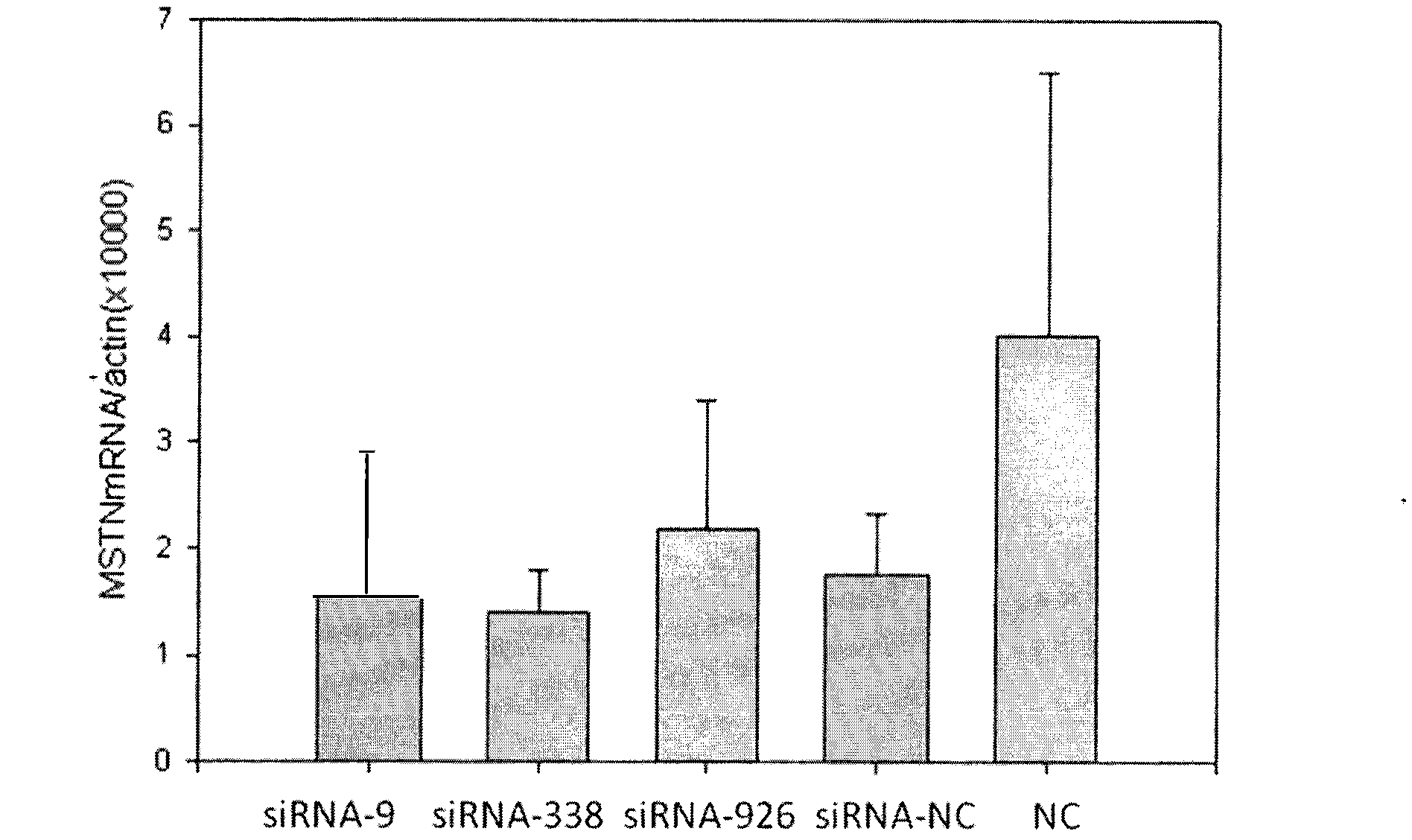Small interfering RNA (siRNA) inhibiting expression of myostatin (MSTN) gene in chicken and application thereof
A myogenesis inhibition and gene expression technology, applied in the field of siRNA that inhibits the expression of chicken myostatin gene, can solve the problems of long generation interval, low breeding efficiency, low selection intensity, etc., and achieve the effect of increasing meat production
- Summary
- Abstract
- Description
- Claims
- Application Information
AI Technical Summary
Problems solved by technology
Method used
Image
Examples
Embodiment 1
[0022] Embodiment 1, the design and synthesis of siRNA
[0023] According to the myostatin gene (MSTN) published by NCBI, three pairs of siRNA were designed as follows:
[0024] The first pair (siRNA-9): 5'-GCUAGCAGUCUAUGUUUAUTT-3' (SEQ ID NO: 1);
[0025] 3'-TTCGAUCGUCAGAUACAAAUA-5' (SEQ ID NO: 2);
[0026] The second pair (siRNA-338): 5'-CCACAACCGAGACGAUUAUTT-3' (SEQ ID NO: 3);
[0027] 3'-TTGGUGUUGGCUCUGCUAAUA-5' (SEQ ID NO: 4);
[0028] The third pair (siRNA-926): 5'-GCUCCGGAGAAUGUGAAUUTT-3' (SEQ ID NO: 5);
[0029] 3'-TTCGAGGCCUCUUACACUUAA-5' (SEQ ID NO: 6);
[0030] Control siRNA (siRNA-NC): 5'-UUCUCCGAACGUGUCACGUTT-3';
[0031] 3'-TTAAGAGGCUUGCACAGUGCA-5'.
[0032] The above 4 pairs of siRNA are chemically synthesized, and the chemically synthesized siRNA is a vacuum-dried product, and the product is dried at the bottom of the tube and becomes a dry powder.
Embodiment 2
[0034] Example 2, Expression of MSTN gene in chicken embryo myoblasts after siRNA transfection
[0035] Three pairs of siRNAs prepared in Example 1 were used to carry out transfection experiments on chicken embryo myoblasts, and the specific steps were as follows:
[0036] 1. Take the 9-day-old Bailaihang egg (purchased from the experimental chicken farm of the Animal Science and Technology College of China Agricultural University) and tear the inner shell membrane, allantoic membrane and amniotic membrane of the egg with sterilized elbow forceps, clamp out the chicken embryo, and put it in Rinse blood stains and impurities in sterile petri dishes that have been added with DPBS.
[0037] 2. Move the embryo to the dissecting microscope, use ophthalmic tweezers to remove the breast skin of the chick embryo, expose the pectoral muscle, and cut the muscle from the rib cage. Put into a Petri dish filled with DPBS solution. Separate the other half of the pectoralis musculature in ...
Embodiment 3
[0047] Embodiment 3, the expression level of MSTN gene in living chicken embryo after siRNA transfection
[0048] Three pairs of siRNA prepared in Example 1 and a control siRNA (siRNA-NC) were used to perform transfection experiments on live chicken embryos, and the experimental conditions are shown in Table 1.
[0049] Table 1 Live chicken embryo transfection experiment situation
[0050] injection group
Number of eggs injected
Number of 3-day-old chick embryos collected
number of chicks
siRNA-9
47
7
2
siRNA-338
42
9
4
siRNA-926
44
8
2
siRNA-NC
23
7
0
NC
79
8
6
[0051] The 3-day-old chick embryo is the chick embryo hatched 3 days after injection.
[0052] The specific steps of live chicken embryo transfection experiment are as follows:
[0053] 1. Mix 12 μL Opti-MEM and 3 μL siRNA to make solution A; mix 12 μL Opti-MEM and...
PUM
 Login to View More
Login to View More Abstract
Description
Claims
Application Information
 Login to View More
Login to View More - R&D
- Intellectual Property
- Life Sciences
- Materials
- Tech Scout
- Unparalleled Data Quality
- Higher Quality Content
- 60% Fewer Hallucinations
Browse by: Latest US Patents, China's latest patents, Technical Efficacy Thesaurus, Application Domain, Technology Topic, Popular Technical Reports.
© 2025 PatSnap. All rights reserved.Legal|Privacy policy|Modern Slavery Act Transparency Statement|Sitemap|About US| Contact US: help@patsnap.com



